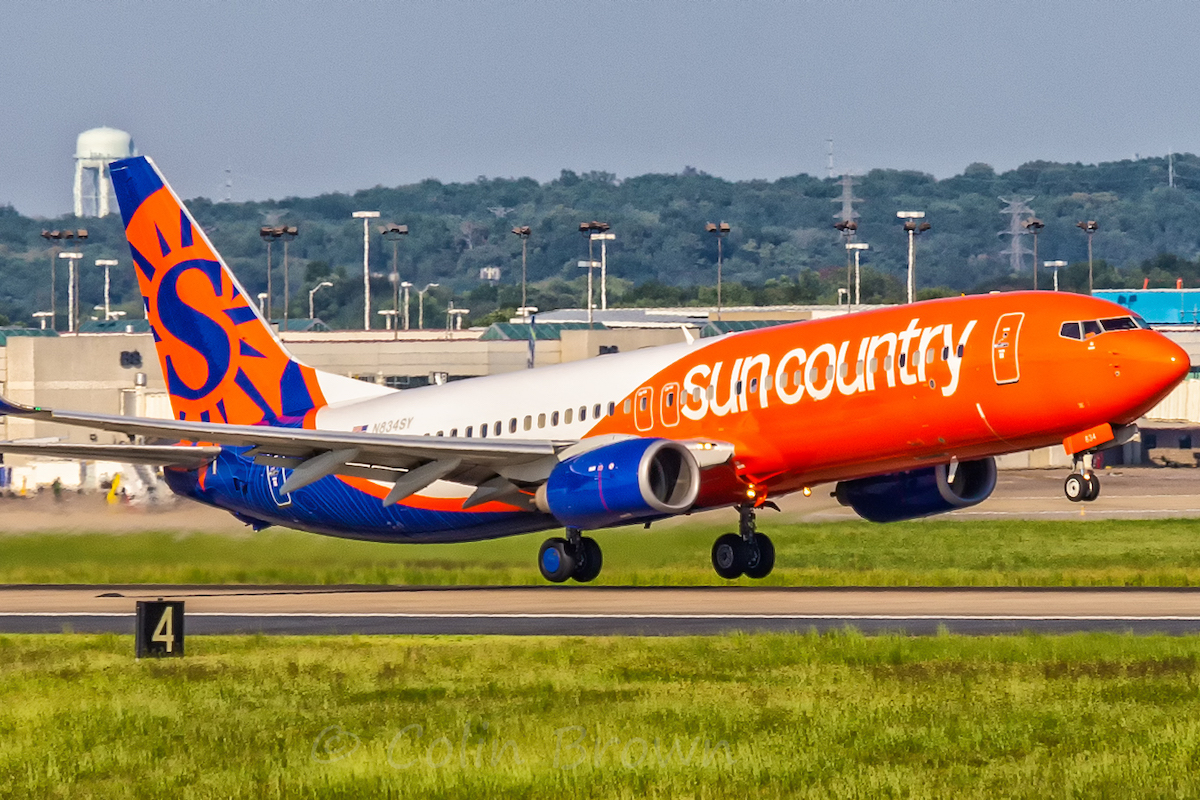Sun Country CEO Sees Higher Fares From Pilot Shortage

Photo Credit: Flickr / Colin Brown
Sun Country Airlines faces challenges hiring across its business amid the labor issues facing U.S. companies. But even as it struggles to find enough pilots and maintenance technicians to grow as fast as it wants, executives see a silver lining in the higher airfares that are likely from a slower airline recovery.
"I believe staffing challenges will result in downward pressure on capacity and therefore, be positive to fares," Sun Country CEO Jude Bricker said during the carrier's fourth-quarter and full-year results call on Tuesday.
Bricker has good reason to find a silver lining. The airline posted a 9 percent increase to $111.48 in its base fare per passenger during the fourth quarter compared to the three months prior. And year-over-year, fares were up 28 percent. Sun Country, which went public last March, did not publish average fare data for 2019.
The upward trend is a matter of supply and demand. While the Omicron variant hit demand for air travel in January and February, airlines — Sun Country included — remain confident in throngs of vacationers returning to the skies for spring break in March and April, and then again this summer. That return is all well and good for airlines but it means fares will rise if the industry cannot resume — or exceed — its pre-pandemic schedules in lock step with demand. And after thousands of pilots retired during the pandemic, the timeline of the supply-side recovery is in question amid the growing staffing shortages.
American Airlines, Delta Air Lines, and United Airlines have already pared back their schedules this spring to mitigate any shortage of pilots at their regional affiliates. American has temporarily suspended or delayed the start of dozens of routes, while United has pulled out of several smaller cities and cancelled numerous regional routes. Delta has cut regional flying by up to a quarter but not exited any destinations in the first half of 2022, executives said in January.
For Sun Country, the lack of staff is limiting its ability to grow. Bricker said that in March the airline will fly the "maximum volume limited by staff," though he did not indicate how much the airline would like to fly. Sun Country plans to fly 5-10 percent more capacity in the first quarter than it did three years earlier.
The carrier's fleet growth plans remain unchanged amid its staffing issues. In January, Sun Country signed letters of intent for five used Boeing 737-800 aircraft due later this year. Those aircraft, along with two it acquired last year, put it on track to meet its target of adding eight passenger aircraft to its fleet in 2022, said Chief Financial Officer Dave Davis. Sun Country flew 36 passenger aircraft plus 12 737 freighters under a deal with Amazon at the end of December.
Sun Country reached a new deal with its pilots union that executives think will make it even more attractive to new hires. The contract includes better pay and benefits, as well as improved work rules for pilots, and new flexibility for the airline to move crew members around its system where they are needed. Davis described the deal as "highly competitive with our low-cost peers." He added that, since the agreement was signed in December, pilot applications jumped 160 percent compared to the months just prior to the deal.
The question for many Wall Street analysts is how the new pilots deal will impact overall costs. Sun Country forecasts that unit costs excluding fuel, but including the new labor agreement, will be lower in 2022 than they were in 2019. He attributed the drop to the airline's planned growth, renegotiating aircraft leases, and technology improvements.
Sun Country's ability to lower unit costs is big in an industry where cost pressures are increasingly a concern for management teams. Most airlines forecast significant increases in 2022 compared to 2019 with labor cost pressure a big reason for the increase, while flying less also factors in. Many analysts have pressured management teams to get costs in check as carriers are expected to transition out of the crisis this year.
Bricker was unconcerned about the proposed merger between competitors Frontier Airlines and Spirit Airlines unveiled Monday. He pointed to the fact that neither carrier has a significant presence in Sun Country's home Minnesota market — Cirium schedule data shows Frontier and Spirit sixth in Minneapolis-St. Paul with a 3.2 percent share of seats in February — and added that he does not see a merger as changing that positioning.
"I think it's a net positive," he said of the deal. "I don't think it changes the dynamic much here in Minneapolis."
And The Numbers
Sun Country lost $602,000 on nearly $173 million in revenues in the fourth quarter. Revenues were up up 60 percent year-over-year in the period. Total unit revenues (TRASM) were up 34 percent and unit costs (CASM) excluding fuel were down 2.2 percent. And the airline flew 72 percent more passenger traffic on 36 percent more capacity.
For the full year, Sun Country posted a $77 million profit including a $72 million benefit from federal coronavirus aid. Revenues increased 55 percent to $623 million compared to 2020. TRASM was up 7.9 percent on a 0.6 percent decrease in CASM excluding fuel.
The carrier forecasts revenues of $215-225 million in the first quarter, or a 9-14 percent increase over the same period in 2019.
